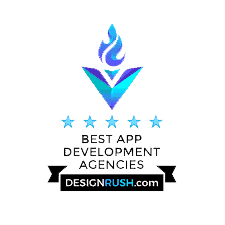The web design and development process are quite different compared to other communication-related methods. As a result, multiple steps are involved in the website design, web development, and custom software development process, which are explained below.
1) Defining the Project
The first step is to identify the main reasons for the website’s existence, web application, or custom software and determine what the client wants to achieve with their website and software.
The initial step in this process for the web development company is to interview the organizations or stakeholders regarding the site/software goals, understand the target audience’s needs, and analyze major competitors.
The goal of this definition process is to identify the measurable outcomes which are related directly to the organization’s strategic objectives.
2) The Project Scope
The next important step for web programmers is to figure out exactly what the project will include. The development team should put together a clear plan that outlines the tasks, what needs to be delivered, and when everything should happen, whether it’s for web design, development, or custom software.
This helps set the right expectations with the client. An easy way to track updates on your project is by using project management tools like Basecamp and Trello which inform your client about the process.
3) Site Architecture / Draft Wireframes
The next step is to create a sitemap or site architecture for the website and custom software development. This could be draft wireframes of how the web pages will look like.
By creating a sitemap, you ensure that you have kept all the site’s key pages in consideration. This shows the relationship of these pages with one another and defines the way the overall navigation of the site should be created.
Creating a wireframe gives you a view of how the web pages will appear. Although essential design elements are not shown, the wireframe can still guide you in defining the website’s hierarchy of content.



4) Visual Design
After completing the site’s wireframe, the next step is to give a visual design to your website. The overall look and feel of the website will be based on the visual representation of the brand or organization. The organization’s brand plays a key role in the visual designing process as web designers, and website programmers need to convey the major perceptual ideas of the brand in the website design.
The custom web design and development company you hire will usually provide you with a design mockup for the homepage and your website’s inner/content page. Once you approve the design, they will proceed with further design and development.
5) Website Development
When your design is approved, the next step to look forward to is to flesh out the page’s design, refine the old content, create new content and create media, such as graphics, slideshows, etc., that will appear on the website.
The web development company will now convert the design into HTML / CSS and provide you with a non-functional prototype of the website.
Once the non-functional prototype has been reviewed and approved, website programmers begin to develop and activate the website.
One important step is choosing which CMS you want to use. You’ll decide this with the team. A lot of people go with WordPress, Laravel, Joomla, or Drupal, it just depends on what fits your needs.
6) Testing the Site
Before launching the website, it is placed on the production server through which the internal audience and a selected number of people can view it. Then, the quality assurance team tests if the website is mobile responsive and if the website is working as mentioned in the project scope.
Site testing is critical as many issues must be addressed before launching the website. If your site fails correctly after launching, it will negatively impact the entire organization’s brand. Therefore, this step is essential and critical as it identifies the design elements to be fixed.
7) The Launch
After all the test steps are completed, it is time for the big day. You have reviewed and approved the project with the organization’s stakeholders and are good to go. But the process does not end here.
It would be best if you were prepared to address the user feedback even after the launch. Then, you can expect to make quick possible changes to the website and make quick adjustments.
So here is the basic Website Design & Development Process Explained. If you want to design and develop your website and are looking for a professional web design and development company, then My Web Programmer can help you. Please request a free quote by filling out the contact form below.

Final Thoughts
In conclusion, the website design and development process involves several key steps. It begins with defining the project and understanding the client’s goals and target audience. The project scope is then identified to set clear expectations.
Sitemaps and wireframes are created to establish the site’s structure. Visual design is implemented based on the brand’s identity, and the approved design is developed into a functional website using HTML/CSS. Testing ensures responsiveness and functionality before the final launch.
Launching the website is not the end; user feedback is addressed, and adjustments may be made. It’s very important to partner with a professional web design and development company. If you have any website or custom software needs, my Web Programmer is here to assist you. Request a free quote to start your project with their expertise.





